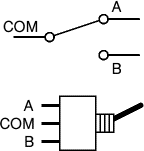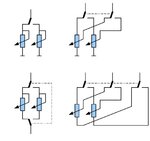curtcon
Newbie level 3
I have a potentiometer set in place and working, I would like to have a switch that allows the potentiometer to work as normal when off and to have a 1k ohm resistance when switched on. I would like to stay with a single rocker switch if possible. Can a 5 pin relay be used for what i am trying to make or will resistance to work thru a relay? is there something that will work as a relay that is made just for 2 different resistance settings that would work better?
I can just use a 2 position switch if need be but would like to keep it uniform to the switches I have now.
Thank you for any advice
I can just use a 2 position switch if need be but would like to keep it uniform to the switches I have now.
Thank you for any advice


